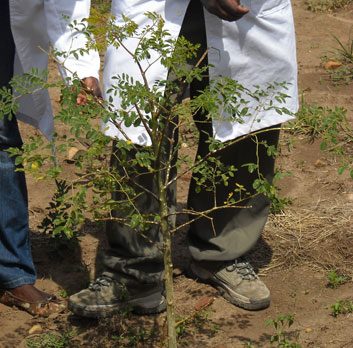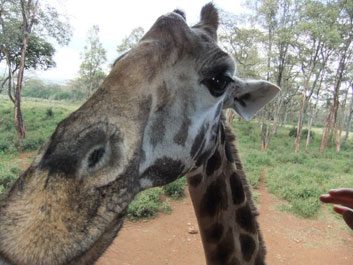Moringa: The plant with more protein than milk
Earlier this month I was in Kenya on a volunteering holiday with an organization called Free the Children (FTC). Along

Earlier this month I was in Kenya on a volunteering holiday with an organization called Free the Children (FTC).
Along with seeing breathtaking landscapes, meeting inspiring people and feeding giraffes (!), I got to learn all about how FTC helps communities in rural Kenya. (Full disclosure: my boyfriend works for the organization, which is how I got to tag along on the trip).
One of the most inspiring projects I saw was the health clinic FTC recently opened in the region known as the Masai Mara (hey, I’m a health editor’health stuff interests me). The facility is completely run on solar energy and focuses as much on prevention as it does on treatment. As part of this initiative, the clinic maintains a medicinal garden of plants that offer both nutritional and curative properties.
While touring the garden, I learned about a plant called moringa, a nutritional powerhouse that is packed with essential nutrients. (That’s a picture of a moringa plant up there.) According the non-profit organization Trees For Life in the U.S., the leaves of the moringa tree contain more than three times the calcium of cow’s milk, more than three times the potassium of a banana and seven times the vitamin C of oranges.
FTC is encouraging the people of the Mara to grow moringa in their own gardens and sprinkle the dried leaves onto their food for an extra boost of nutrition. This could potentially save lives because, as I learned, malnutrition is one of the biggest health concerns in that area.
Sometimes called ‘the miracle tree,’ moringa is touted as a solution to malnutrition in many parts of the world. It can tolerate drought, grows fast in arid climates and is purported to treat some illnesses.
I’d never heard of the moringa before going to Kenya, but what a fascinating plant! And what an interesting way to combat malnutrition in areas of the world where food is scarce. You can help by purchasing a moringa tree to communites in need through Trees for Life, or donate to Free the Children’s health initiatives, which include tree planting and environmental education.
Oh, and here’s a picutre of one of the girraffes I fed’just for fun.





